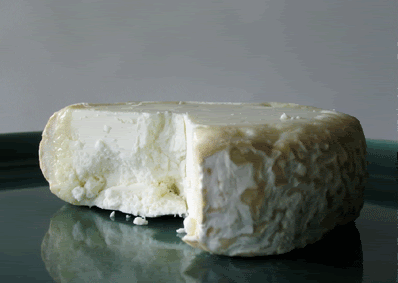Wednesday, April 18, 2012
http://grilledcheeseinvitational.com
....April 28th, at the Rose Bowl in Pasadena.
I'll be there. Will you?
Sunday, August 30, 2009
i have found what you are like... (Ricotta Salata)

Ricotta Salata (shown on toasted baguette with fig preserves)
region: Sicily
type: sheep's milk
i have found what you are like
the rain
(who feathers frightened fields
with the superior dust-of-sleep. wields
easily the pale club of the wind
and swirled justly souls of flower strike
the air in utterable coolness
deeds of gren thrilling light
with thinned
newfragile yellows
lurch and.press
--in the woods
which
stutter
and
sing
And the coolness of your smile is
stirringofbirds between my arms;but
i should rather than anything
have(almost when hugeness will shut
quietly)almost,
your kiss
e.e. cummings (from Tulips & Chimneys, 1923)
Sunday, August 23, 2009
For Folk's Sake (Appenzeller)

Appenzeller
region: Appenzell, Northeast Switzerland (Alps)
type: cow's milk
As the world grows more accessible, universal, and ultimately more generic, I find myself hungry to experience a deeper sense of "place". Outside of design, music and travel, food (specifically cheese) seems to satisfy this desire. From pasture to product, it so-remarkably reflects the context from which it came.
region: Appenzell, Northeast Switzerland (Alps)
type: cow's milk
As the world grows more accessible, universal, and ultimately more generic, I find myself hungry to experience a deeper sense of "place". Outside of design, music and travel, food (specifically cheese) seems to satisfy this desire. From pasture to product, it so-remarkably reflects the context from which it came.
The region of Appenzell has been producing the same herbal-rind cheese since the 14th century. Only 67 sq. miles in area, it is home to over 70 cheese-making dairies. (My friend Claire, who lived in Switzerland as a child, remembers "...the scent of cheese permeated the air".) Steeped in tradition, farmers continue to celebrate "Alpfahrt", an annual customary trek through Alpine pastures between late summer and early autumn.
This from [www. appenzell.ch]:
"The long trek up the mountain begins in the small hours, maybe around three a.m. From far away you can hear the sonorous harmony of the three large cowbells, the plaintive yodelling of the herdsmen, the deep lowing of the cattle, the snapping and yapping of the Appenzell cattle-dog, known in dialect as Bläss. At first they are only silhouettes, and then, as dawn breaks, the magnificent choreography underlying every journey to and from the alpine pastures becomes ever more distinct: a little boy in herdsman's costume leads a herd of white, hornless Appenzell goats driven by a little girl wearing the everyday Appenzell dirndl dress. Then comes the herdsman, every inch a king, proudly dressed in his traditional outfit with all its accoutrements. Over his left shoulder he carries a wooden milking pail, the base of which (the Bödeli) is decorated with a small, round hand-painted picture. He is followed by three fine cows wearing the great heavy bells called Senntumschellen, on artistically decorated leather straps. Four more men in costume march ahead of the rest of the herd, and finally, bringing up the rear of the procession, come the horse-drawn carts carrying the equipment needed for summer in the mountains and the pigs."
(Interesting to note: Until the 20th century, only farmers were allowed to paint such scenery, for fear that the tradition would not be depicted accurately.)
The character of this cheese is lovely (smooth, very nutty, sharp finish), and it paired beautifully with the muscat grapes I just picked up at this morning's farmer's market. I am eager to try this with a glass of Chardonnay or Pinot Grigio, per the cheese vendor's suggestion.
Wednesday, April 11, 2007
The Reign in Spain....
If you are particularly fond of Spanish cheeses, you might want to check out this site: www.cheesefromspain.com
It is an overview of cheese varieties, producers, as well as a few recipes...as organized by the Trade Comission of Spain. There is much detail about which regions the cheeses derive from, the associated animal breeds and landscape, and the process utilized...making this a great agriculturally-oriented resource.
It is an overview of cheese varieties, producers, as well as a few recipes...as organized by the Trade Comission of Spain. There is much detail about which regions the cheeses derive from, the associated animal breeds and landscape, and the process utilized...making this a great agriculturally-oriented resource.
Friday, April 06, 2007
"The Union of Want and Sentiment"
About a month ago, I decided to attend a wine / cheese pairing class at The Beverly Hills Cheese Store. Somewhere between my second or third glass of wine, in combination with my after-work fatigue...I found myself intensely distracted. Chalky-white goat cheese pyramids stacked high above the countertops; Crumbling Stiltons, with caverns of blue; Massive wheels of Pecorino and Romano, finely decorated with metallic foils; Fresh, delicate leaves wrapped around tiny morsels; These are just a few of the sights from that evening.....

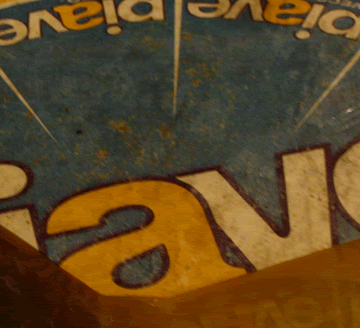
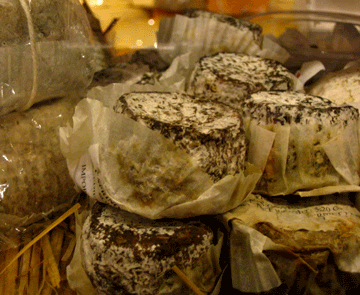



A World, Defined

(map courtesy of www.tannazie.blogspot.com)
The true beauty of the internet is that one's passion for the particular is knowingly shared by others. Weeks ago, I discovered this incredible drawing on a fellow blogger's webpage. It is a map of various, albeit abstracted regions of the world, and the word for "cheese" in the respective languages. On her blog, Tennaz describes creating this map with five co-workers during a lunchbreak (...we should all be so productive). She also provides this wonderful link: http://en.wikipedia.org/wiki/List_of_cheeses.
Thanks Tennaz!
Sunday, December 03, 2006
In Vein (Morbier)
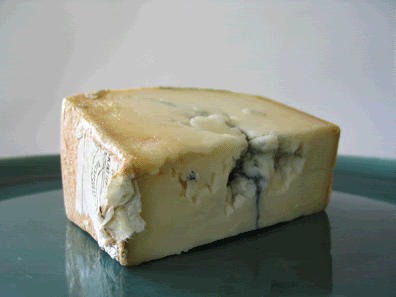
Morbier
region: Roanne, France (Jura Mountains, near the Swiss border)
type: cow's Milk
Perhaps it is my imagination, but the "Cheese Plate" seems to be on restaurant menus everywhere. Trendiness has often spurred feelings of repulsion in me (most recently induced by the unfortunate revival of 80's fashion), however, consuming cheese on a regular basis is a trend I will not only blindly participate in, but I will pressure my peers to do the same.
Morbier is a cheese that I often see on the menu, and over time I have come to realize that a trend requires the presence of two things: One, it must appeal to the masses and two, it must be widely available. Haute couture-turned-Prêt-à-Porter, you will find the goods are an adaptation in order to accomodate these two factors. This from Murray's Cheese, in New York....
"Legend has it that Comté cheese-makers with extra curds at the end of each day sprinkled them with soot to protect their bounty from flies until they could add milk the following morning to complete a smaller wheel of cheese for personal consumption. Thus, semi-soft, pressed and uncooked cheese with pronounced aroma and hearty flavor, which is Morbier. Today the layer is one of vegetable ash, usually decorative, and the paste remains supple and sweet. "
Saturday, November 11, 2006
Oi vai iz mir! (Umbriaco)
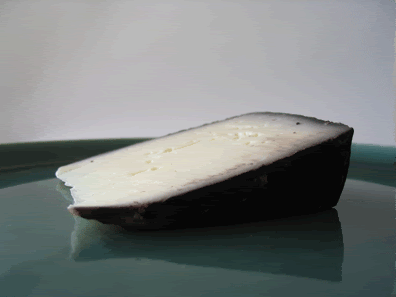
Umbriaco
region: Lombardy, Italy
type: cow's milk
Recalling my love of wine-soaked rind cheeses (i.e. Drunken Goat), Umbriaco seemed like an exciting find. Days later, I sat down to enjoy what I thought would be an often-honored treat and immediately wondered, "What was I thinking? Perhaps I was slightly inebriated during my visit to the Cheese Shop?" While the wine soaked rind makes a cheese like Drunken Goat slightly interesting in character, it simply makes Umbriaco a well-textured cheese overlapped by an intensely sweet fruity flavor. (Who knew Manischewitz was big in Lombardy, Italy?!) If you are one who thinks of Jolly Ranchers, Blow Pops or SweetTarts as a delicacy, Umbriaco might just strike your fancy.
Saturday, October 28, 2006
"From Grass to Cows to Milk to Cheese..." (Gubbeen)
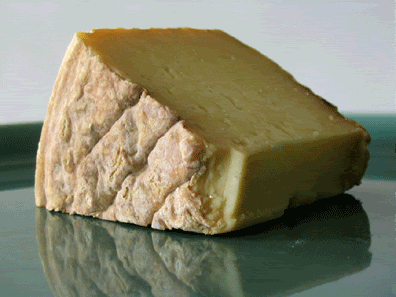
Gubbeen
Region: West Cork, Ireland
Milk: cow milk
[Last week, our local public radio show "Good Food" aired an interview with Chris Pollan, cheese guru and proprietor of The Silverlake CheeseShop. Among other things, Chris suggested listeners explore a few overlooked gems, including Gubbeen. This made me very happy, as this cheese has become a kind of staple in my household. In fact, many months and several cheese wedges later, it seemed as though I could not keep it around long enough to capture it for The Cheese Project. Finally!]
The winter season has most definitely found it's way to my tastebuds...rich, savory and "cozy" foods seem all the more appealing. Gubbeen is a pungent, deep, and musty kind of cheese and although it packs a punch (the name stems from the Gaelic word "gobin", which means "small mouthful"), its flavor is also full of depth and subtlety. It is a washed-rind, semi-soft cheese made by Tom and Giana Ferguson, who are fifth-generation producers. They have an incredibly beautiful and informative website definitely worth checking out, (www.gubbeen.com).
If you would like to hear the entire "Good Food" interview, it is available via Podcast (www.kcrw.com)
Friday, October 27, 2006
...Digging Deeper
Just discovered this....How timely!
Published in the New York Times / October 4, 2006
The Earth Is the Finishing Touch
By Marian Burros
By going underground, Mary and David Falk have stayed on top of most artisanal cheesemakers in this country. For 10 years, at their Love Tree Farmstead in Grantsburg, Wis., they have been aging cheeses in caves dug into a hillside, their concrete walls painted with pictographs. The Falks say it’s the only way to produce deeply flavored, nuanced, natural-rind tommes and wheels like those of European cheesemakers. "We believe in fresh-air aging, pollens, molds, humidity," Ms. Falk said. “And we’ve positioned our cave so that it is surrounded by a wildlife refuge. It’s really a head trip to see semis pull up in the woods to get the cheese. It’s like from 'The Twilight Zone.' We wanted something that worked on the natural rhythm of the area. We took the microflora from what was there; we get humidity from the springs."
Over the past few years, the Falks have been joined by a number of other cheesemakers, particularly on the East Coast, who want a more natural way of aging to give each cheese its own character. Stepping away from above-ground hermetic aging rooms with artificially controlled temperature and humidity and from ripening cheese wrapped in Cryovac or sealed in wax, these cheesemakers have started a little construction boom in caves and cellars, getting a bit closer to the way cheese was aged for centuries. Jeff Roberts, a co-founder of the Vermont Institute for Artisan Cheese, who is just finishing the first "Atlas of American Artisan Cheese," to be published by Chelsea Green next June, said there are at least 35 caves and cellars in the United States, with seven more under construction. As cheesemaking and the appreciation of good cheese have matured in the United States in the past few years, American cheesemakers have begun to better understand the place of microflora — bacteria, yeast, molds — in the process of aging cheese. In these new caves and cellars, cheeses are exposed to an array of the tiny organisms local to the area. "Caves are not only great in terms of maintaining temperature and humidity but they also reflect the unique microflora communities," Mr. Roberts said. “The microflora interacts with cheese; the cheese obtains a certain level of quality and so does the microflora. The cheese evolves over time and you can’t regulate it. It has a powerful connection to place."Ms. Falk describes the mold that forms on cheese as “a miniature flower garden, with the flowers sucking air into the cheese and pulling out the gas, and every little mold having its own little flavor profile." What may be the biggest aging cave in this country is under construction at Jasper Hill Farm in Greensboro, Vt. There, Mateo Kehler; his wife, Angela; his brother, Andy; and Andy’s wife, Victoria, are already aging 30,000 pounds of their own cheeses and those of several other Vermont cheesemakers in the cellar beneath their house. Under construction on the property is an 18,000-square-foot series of seven stone-floored caves that will be able to hold one million pounds of cheese when it is completed in the spring. The Kehlers will mature and distribute their own cheeses, including Constant Bliss, Winnemere and Bayley Hazen blue, and those from other cheesemakers, like a cloth-bound Cheddar from Cabot Creamery. Mateo Kehler is the affineur, the person responsible for the proper maturation of the cheese. The Falks in Wisconsin are already aging cheese for others in two rooms with conical ceilings, dug eight feet underground. In caves or in aging rooms, the affineur’s job includes testing for salt, acidity and moisture, but most of the time-consuming, labor-intensive work is more art than science. After the cheeses have been made, salted and molded, they go off to the cave, where they are coddled like newborns. Within the caves there are drying rooms where some cheeses start, and warm rooms and cold rooms for aging different varieties. Each variety, whether bloomy rinds covered with mold, blue cheese, cloth-bound Cheddar-type cheeses, natural-rind tommes or washed rinds, requires a different level of temperature and humidity.
Figuring out when to move the cheese is one of the decisions the affineur must make. "We touch it, we look at it, we smell it," Mr. Kehler explained. Depending on the stage of aging, the cheeses are flipped as often as once a day; as seldom as every four or five days. Between one and four times a week the rinds of certain cheeses are washed, some with beer, some with brine. Cheeses like Cheddar are brushed as a way to manage the molds. The particular mold in the Jasper Hill cellar imparts a wonderful nutty character. How long a cheese is aged depends on the variety and the individual cheese. "If it were just plain hard work we wouldn’t need an affineur", Mr. Kehler said, "we’d just need a laborer. It’s a lot of repetitive, monotonous work, but it’s purposeful. Being in a cellar is complex and challenging. You have to pay a lot of attention. If you don’t do it you will never have a cheese that reaches its potential." There is a certain romantic notion to cave-aged cheese, perhaps because the process taking place deep underground seems so mysterious. But Mr. Kehler has a different perspective: "If you think that slogging it out for 10 to 12 hours a day in a dark, damp, cold environment is romantic, this may the job of your dreams."
Cave-aging is already paying off. In a tasting of English and Vermont Cheddars last month at Shelburne Farms in Vermont, a cloth-bound Cabot Cheddar, aged in the Jasper Hill cellar, stole the show. It had already been named best in show at the American Cheese Society meeting earlier in the summer. Interest in sophisticated American cheeses, with their layers of flavor, began in the 1980’s with simple little fresh goat cheeses that require no aging. Little by little the land of Velveeta-ized taste buds has been turning into the home of finely tuned palates, and the fresh cheeses have been joined, and often replaced, by those that have much more character from aging. It was not always this way. Sitting on an overturned farm sink, just outside the door to the little cheese cave she built on her farm in Westfield, Vt., nine years ago, Laini Fondiller, who is known for making new cheeses every year with new names (this year’s tomme is called Tomme DeLay), reminisced about the early days of trying to sell her aged Lazy Lady goat cheeses. "With their bloomy rinds, which ripen from the outside in, she said, “people would get freaked out when they saw my cheese with the mold on it. They thought cheese should either be white or vacuum-packed," she added. Jonathan White, owner of Bobolink Dairy in Vernon, N.J., remembers someone writing in the mid-90’s that a certain cheese was potentially lethal because it was being aged in a cellar. It’s been quite a leap, he said, "from the idea of it being horrifying to 'look, we’re doing it.' " Whether cheese ages best in an above-ground, climate-controlled aging room or in a cave or cellar, is a matter of some dispute. For me, though, the dispute was settled at a tasting of a Cheddar from Shelburne Farms that Mr. Kehler is cellar-aging against the same cheese being aged in an above-ground cold room at Shelburne. Though both cheeses were too acid, the cellar-aged version was much less so and had more depth of flavor. (The rinds on both tasted somewhat moldy, but Mr. Kehler is helping Shelburne fix that problem.) The differences are even greater when comparing cave-aged cheese to cheese that has been sealed in wax or Cryovac before aging. I sampled four Vermont cheeses available waxed and aged, including the Cabot and cheese from Orb Weaver Farm. In three of the four the waxed cheeses were pleasant but without complexity; the flavors of the cave-aged were much more intriguing.The bitterness and funkiness of the fourth, waxed and cave-aged, brought to mind what Dr. Paul Kindstedt, a professor of food science at the University of Vermont and the co-author of "American Farmstead Cheese" (Chelsea Green, 2005), said about cheesemaking. "Whatever cheese becomes when it grows up will be established in the vat," he said. "All the affinage cannot change it." Some cheese shops, including Murray's in New York and Cow Girl Creamery in Point Reyes Station, Calif., which also has shops in San Francisco and Washington, have built cellars or aging rooms, although most of the cheeses are mature when they arrive at the store. "We don’t pretend to be affineurs," said Sue Conley, the co-owner of Cow Girl Creamery, "but we think we do a pretty good job of keeping cheese in really good condition and presenting it at its peak." Cave-aging already has enough cachet that some less-reputable producers of cheeses are taking advantage of it, Ms. Falk said. "I know people who take the Cryovac or wax off, and cave-age them for a couple of months to get a rind,” she said. "Then they market them as cave-aged. But, she added, those producers don’t last very long." Real cave-aging is more demanding, and American artisanal cheesemakers still have a lot to learn about ripening cheese. "We may not know it all now,” Mateo Kehler said, “but we will."
Published in the New York Times / October 4, 2006
The Earth Is the Finishing Touch
By Marian Burros
By going underground, Mary and David Falk have stayed on top of most artisanal cheesemakers in this country. For 10 years, at their Love Tree Farmstead in Grantsburg, Wis., they have been aging cheeses in caves dug into a hillside, their concrete walls painted with pictographs. The Falks say it’s the only way to produce deeply flavored, nuanced, natural-rind tommes and wheels like those of European cheesemakers. "We believe in fresh-air aging, pollens, molds, humidity," Ms. Falk said. “And we’ve positioned our cave so that it is surrounded by a wildlife refuge. It’s really a head trip to see semis pull up in the woods to get the cheese. It’s like from 'The Twilight Zone.' We wanted something that worked on the natural rhythm of the area. We took the microflora from what was there; we get humidity from the springs."
Over the past few years, the Falks have been joined by a number of other cheesemakers, particularly on the East Coast, who want a more natural way of aging to give each cheese its own character. Stepping away from above-ground hermetic aging rooms with artificially controlled temperature and humidity and from ripening cheese wrapped in Cryovac or sealed in wax, these cheesemakers have started a little construction boom in caves and cellars, getting a bit closer to the way cheese was aged for centuries. Jeff Roberts, a co-founder of the Vermont Institute for Artisan Cheese, who is just finishing the first "Atlas of American Artisan Cheese," to be published by Chelsea Green next June, said there are at least 35 caves and cellars in the United States, with seven more under construction. As cheesemaking and the appreciation of good cheese have matured in the United States in the past few years, American cheesemakers have begun to better understand the place of microflora — bacteria, yeast, molds — in the process of aging cheese. In these new caves and cellars, cheeses are exposed to an array of the tiny organisms local to the area. "Caves are not only great in terms of maintaining temperature and humidity but they also reflect the unique microflora communities," Mr. Roberts said. “The microflora interacts with cheese; the cheese obtains a certain level of quality and so does the microflora. The cheese evolves over time and you can’t regulate it. It has a powerful connection to place."Ms. Falk describes the mold that forms on cheese as “a miniature flower garden, with the flowers sucking air into the cheese and pulling out the gas, and every little mold having its own little flavor profile." What may be the biggest aging cave in this country is under construction at Jasper Hill Farm in Greensboro, Vt. There, Mateo Kehler; his wife, Angela; his brother, Andy; and Andy’s wife, Victoria, are already aging 30,000 pounds of their own cheeses and those of several other Vermont cheesemakers in the cellar beneath their house. Under construction on the property is an 18,000-square-foot series of seven stone-floored caves that will be able to hold one million pounds of cheese when it is completed in the spring. The Kehlers will mature and distribute their own cheeses, including Constant Bliss, Winnemere and Bayley Hazen blue, and those from other cheesemakers, like a cloth-bound Cheddar from Cabot Creamery. Mateo Kehler is the affineur, the person responsible for the proper maturation of the cheese. The Falks in Wisconsin are already aging cheese for others in two rooms with conical ceilings, dug eight feet underground. In caves or in aging rooms, the affineur’s job includes testing for salt, acidity and moisture, but most of the time-consuming, labor-intensive work is more art than science. After the cheeses have been made, salted and molded, they go off to the cave, where they are coddled like newborns. Within the caves there are drying rooms where some cheeses start, and warm rooms and cold rooms for aging different varieties. Each variety, whether bloomy rinds covered with mold, blue cheese, cloth-bound Cheddar-type cheeses, natural-rind tommes or washed rinds, requires a different level of temperature and humidity.
Figuring out when to move the cheese is one of the decisions the affineur must make. "We touch it, we look at it, we smell it," Mr. Kehler explained. Depending on the stage of aging, the cheeses are flipped as often as once a day; as seldom as every four or five days. Between one and four times a week the rinds of certain cheeses are washed, some with beer, some with brine. Cheeses like Cheddar are brushed as a way to manage the molds. The particular mold in the Jasper Hill cellar imparts a wonderful nutty character. How long a cheese is aged depends on the variety and the individual cheese. "If it were just plain hard work we wouldn’t need an affineur", Mr. Kehler said, "we’d just need a laborer. It’s a lot of repetitive, monotonous work, but it’s purposeful. Being in a cellar is complex and challenging. You have to pay a lot of attention. If you don’t do it you will never have a cheese that reaches its potential." There is a certain romantic notion to cave-aged cheese, perhaps because the process taking place deep underground seems so mysterious. But Mr. Kehler has a different perspective: "If you think that slogging it out for 10 to 12 hours a day in a dark, damp, cold environment is romantic, this may the job of your dreams."
Cave-aging is already paying off. In a tasting of English and Vermont Cheddars last month at Shelburne Farms in Vermont, a cloth-bound Cabot Cheddar, aged in the Jasper Hill cellar, stole the show. It had already been named best in show at the American Cheese Society meeting earlier in the summer. Interest in sophisticated American cheeses, with their layers of flavor, began in the 1980’s with simple little fresh goat cheeses that require no aging. Little by little the land of Velveeta-ized taste buds has been turning into the home of finely tuned palates, and the fresh cheeses have been joined, and often replaced, by those that have much more character from aging. It was not always this way. Sitting on an overturned farm sink, just outside the door to the little cheese cave she built on her farm in Westfield, Vt., nine years ago, Laini Fondiller, who is known for making new cheeses every year with new names (this year’s tomme is called Tomme DeLay), reminisced about the early days of trying to sell her aged Lazy Lady goat cheeses. "With their bloomy rinds, which ripen from the outside in, she said, “people would get freaked out when they saw my cheese with the mold on it. They thought cheese should either be white or vacuum-packed," she added. Jonathan White, owner of Bobolink Dairy in Vernon, N.J., remembers someone writing in the mid-90’s that a certain cheese was potentially lethal because it was being aged in a cellar. It’s been quite a leap, he said, "from the idea of it being horrifying to 'look, we’re doing it.' " Whether cheese ages best in an above-ground, climate-controlled aging room or in a cave or cellar, is a matter of some dispute. For me, though, the dispute was settled at a tasting of a Cheddar from Shelburne Farms that Mr. Kehler is cellar-aging against the same cheese being aged in an above-ground cold room at Shelburne. Though both cheeses were too acid, the cellar-aged version was much less so and had more depth of flavor. (The rinds on both tasted somewhat moldy, but Mr. Kehler is helping Shelburne fix that problem.) The differences are even greater when comparing cave-aged cheese to cheese that has been sealed in wax or Cryovac before aging. I sampled four Vermont cheeses available waxed and aged, including the Cabot and cheese from Orb Weaver Farm. In three of the four the waxed cheeses were pleasant but without complexity; the flavors of the cave-aged were much more intriguing.The bitterness and funkiness of the fourth, waxed and cave-aged, brought to mind what Dr. Paul Kindstedt, a professor of food science at the University of Vermont and the co-author of "American Farmstead Cheese" (Chelsea Green, 2005), said about cheesemaking. "Whatever cheese becomes when it grows up will be established in the vat," he said. "All the affinage cannot change it." Some cheese shops, including Murray's in New York and Cow Girl Creamery in Point Reyes Station, Calif., which also has shops in San Francisco and Washington, have built cellars or aging rooms, although most of the cheeses are mature when they arrive at the store. "We don’t pretend to be affineurs," said Sue Conley, the co-owner of Cow Girl Creamery, "but we think we do a pretty good job of keeping cheese in really good condition and presenting it at its peak." Cave-aging already has enough cachet that some less-reputable producers of cheeses are taking advantage of it, Ms. Falk said. "I know people who take the Cryovac or wax off, and cave-age them for a couple of months to get a rind,” she said. "Then they market them as cave-aged. But, she added, those producers don’t last very long." Real cave-aging is more demanding, and American artisanal cheesemakers still have a lot to learn about ripening cheese. "We may not know it all now,” Mateo Kehler said, “but we will."
Sunday, October 22, 2006
Hello, Wisconsin! (Cave-aged Marisa)
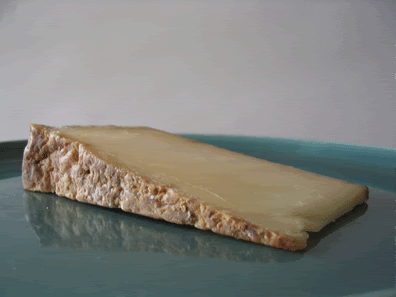
Cave-Aged Marisa
Region: Midwest, USA
Milk: Sheep
This came highly recommended by the Cowgirl Creamery shop in San Francisco, and I must say that it is truly one of the most phenomenal cheeses I have ever tasted. Cave-aged Marisa is smooth and firm in texture. It's flavor is tangy and flowery, and somewhat reminiscent of lavender. The cheese is named after the cheesemaker, Sid Carr's fourteen-year old daughter, Marisa. It hails from La Valle, Wisconsin and yes!... it is actually aged in open-air caves. In 2005, it was awarded 1st place in its class at the American Cheese Society competition. It can be a bit tricky to find, though did come to learn that it can be ordered online through the cheesemaker's website, (http://www.carrvalleycheese.com/)....I suppose it ain't called "America's Dairyland" for nothin'.
Friday, October 13, 2006
How do I love thee?
 At my brand new job just shy of two weeks, there are a couple of things I have come to find deeply comforting. One, our office is just next door to a sprawling gourmet food and cooking supply store...and two, we are strongly encouraged to take an hour-long lunch. (Of course, this will soon be counter-balanced by upcoming deadlines and long workdays...but who's complaining?) On Wednesday, I spent my entire lunch hour combing aisles for tasty treats, and was happy to have come across The Fine Cheese Co. cracker varieties. Besides tasting like something your grandmother would have made from scratch if she were living in Bath, England....the packaging is absolutely exquisite. I love that the flavors directly relate to cheese compatibility, with cheese suggestions graphically incorporated into the package design. While taking my lunch break on Thursday, I decided to check out the The Fine Cheese Co.'s website. I found this to be quite funny.....
At my brand new job just shy of two weeks, there are a couple of things I have come to find deeply comforting. One, our office is just next door to a sprawling gourmet food and cooking supply store...and two, we are strongly encouraged to take an hour-long lunch. (Of course, this will soon be counter-balanced by upcoming deadlines and long workdays...but who's complaining?) On Wednesday, I spent my entire lunch hour combing aisles for tasty treats, and was happy to have come across The Fine Cheese Co. cracker varieties. Besides tasting like something your grandmother would have made from scratch if she were living in Bath, England....the packaging is absolutely exquisite. I love that the flavors directly relate to cheese compatibility, with cheese suggestions graphically incorporated into the package design. While taking my lunch break on Thursday, I decided to check out the The Fine Cheese Co.'s website. I found this to be quite funny.....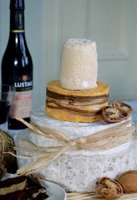 Cheese Wedding Cakes
Cheese Wedding Cakes"If you know a bride who would like a wedding cake with a twist, why not think about a tiered cake of cheese? We can offer a range of cakes suitable for 30 to 300 people. Just let us have a simple brief of cheese likes and dislikes and numbers to feed, and we will suggest the right cake from our repertoire."
(www.finecheese.co.uk)
Tuesday, October 03, 2006
A Bloomy Romance (Adrahan)
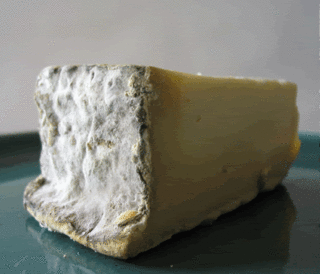
Adrahan
Region: County Cork, Ireland
Milk: Cow
I am in love....there, I said it.
This cheese has all of my favorite qualities (sublimely refined, yet rough around the edges. Stands out in a crowd, but gets along well with others. Tasteful, but definitely not conservative). Unmistakably charming, you too, will fall under its spell. Try taking it to a party and introducing it to your friends. Savor tender moments over a romantic picnic. Bring it home to meet the parents! ...won't let you down, I swear.
Wednesday, September 27, 2006
The Not-So-Gloomy Blues (Cashel Blue)
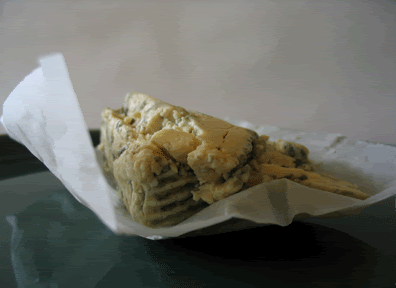
Cashel Blue
Region: Tipperary, Ireland
Milk: cow milk
Another fabulous Neal's Yard cheese...Cashel Blue is Ireland's original artisanal blue cheese. It was first developed in 1984 by a husband and wife couple (Jane and Louis Grubb). It is entirely handmade by a single family on a single farm, and with each purchase it feels like taking a bit of Ireland home.
I particularly love the texture of this cheese, which is creamy but with body, and a bit inconsistent....which tends to remind me that it was made very far from any sort of factory. The flavor is wonderful: a bit salty, a bit sweet and somewhat mild. Mine was gone in a flash, but I had thought of trying it with something fruity (...maybe apricot jam on fresh bread?).
Surprisingly, the cheesemaker has an incredibly informative website, (www.cashelblue.com). Some interesting tidbits discovered: The wine pairing should match the maturity of the cheese: Less mature Cashel Blue works well with acidic, sweet and fruity wines such as a Geweurtztraminer or Pinot Grigio. More mature Cashel Blue works well with Sauternes or Tawny port. (Great! My intuition worked well, though the apricot jam pairing was perhaps taking it a bit too far). They also mention that the cheese gets creamer and less mild over time. (Mine was creamy and mild, which they conclude is at medium maturity level...I conclude that it was perfectly delicious!)
Monday, September 25, 2006
Holy Cowgirl!


I was in San Francisco this past weekend....
A city brimming with expression, one has to appreciate that all angles are accounted for - Whether it is marching down a major street in leather chaps, or promoting the benefits of organic farming...San Franciscans know how to live. This was particularly evident with a visit to the Ferry Building (a place I like to think of as home to the most amazing treasures a foodie can find). The highlight of the journey....the Cowgirl Creamery shop.
I have lived in Los Angeles for fourteen years and experienced many a' star sighting. I swear nothing compared to the reaction I had when out of the corner of my eye, I saw Sue Conley standing in front of her shop. (For those of you who don't know, she is one of the proprietors of Cowgirl Creamery.) I mustered the courage to say hello....within moments, there was a swarm of camera crewmen and a very-makeuped newcaster who began (spotlight on!) interviewing Sue, and her partner Peggy Smith. At this point, the opportunity for a quick meet-and-greet seemed out of the question. Nevertheless, I was still very excited about checking out the shop...which was fantastic.
Our cheesecutter / salesperson was very down to earth and especially helpful. (Maybe this had something to do with the fact that she was not assisting the man next to us, who seemed intent on sharing his opinions about Manchego with the crowd.) Anyway, she suggested some varieties that were a bit more unusual and out-of-the way. After walking around the rest of the shops in the building (mostly all amazing), I noticed Sue again. Not wanting to miss another good opportunity, I let her know I was a huge fan. No, didn't ask for an autograph...but you can damn-well bet it crossed my mind.
Sunday, September 17, 2006
Makes for Weekend Fun (Mitica Monte Enebro)

Mitica Monte Enebro
Region: Spain
Milk: goat's milk
Yesterday morning, R. took his Jetta to the repair shop (again), and when the rental agency handed him the keys to a brand new, tomato-red Volvo S40...we figured it was a perfect occasion for an around-town excursion. We decided to head to a newly-discovered cheese shop in Studio City called The Artisan Cheese Gallery. Perhaps because of the generic-yet-stuffy name, or the fact that is was in the valley, we weren't expecting to be wowed. Much to our surprise, it turned out to be a wonderful find.
Bustling on a Saturday morning, this shop had several tastings happening at once and so many cheeses in the cases and stacked on the counters that I had never heard of or seen before, and many things were without labels. Making it a little less overwhelming, we decided to try a couple of cheeses by makers we had become familiar with. The first was made by Cowgirl Creamery, and was called "Sally Goat". (Essentially, it was a very, very fresh-tasting goat cheese wrapped in grape leaves.) It was very subtle and quite good, but we expressed that we were interested in something with a bit more bite. The next two cheeses we tried were both Neal's Yard...Cashel Blue and Adrahan...both were fantastic. Since these two ultimately made the final cut, I will post details about them soon.
I do want to go back to Mitica Monte Enebro for a moment, and just mention that although it was not part of our findings this trip...it is a cheese worthy of an excursion. The rind is quite ashy, and looks almost like waves of lava rock. The best way I can describe the taste is something between a clean, flowery fresh goat and a sharp pungent blue cheese. It is really wonderful with crusty bread...and although I have not yet had it with wine, I think it would pair nicely with a full-bodied white. (a reader suggested trying the cheese with walnuts and lemon honey, which sounds incredible.)
The Artisan Cheese Gallery
12023 Ventura Boulevard
Studio City, California
91604
owner: Fred Heinemann
www.artisancheesegallery.com
p.s. - pick up a copy of Steven Jenkins' "Cheese Primer" while you are there!
*** I was corrected by one blog reader this week, who kindly let me know that Sally Goat is not made by Cowgirl Creamery, but rather Sally Jackson, in Washington. They also recommended the sheep's milk cheese wrapped in brandy-soaked chestnut leaves from the same cheesemaker. Thank you! ...a delicious treat for the holidays.
Tickle Me More, Ticklemore!
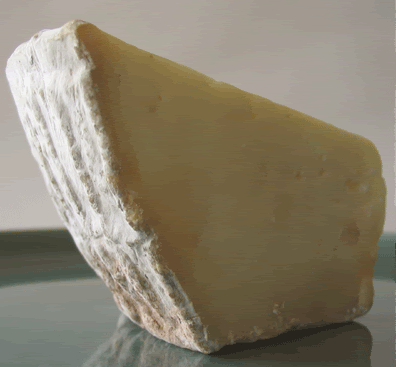
Ticklemore
Region: British Isles, England
Milk: goat milk
There are times when I am drawn to something so deeply and seemingly without reason that instinctually, I respond by spending hours on Google digging up as much dirt on the matter as time allows.... Ticklemore is no exception. Having quickly become one of my favorite cheeses for its odd shape, its sort of unique, dry consistency and tangy, flowery flavor, I thought it would be interesting to find out more about the company behind the cheese...Neal's Yard (one of the most interesting cheese companies around, in my opinion). The story behind Ticklemore has made my heart grow fonder......
Ticklemore is made by a man named Robin Congden, who lives near Totnes, in Devon, England. (Totnes evidently, was an incredibly wealthy merchant town in the 16th and 17th centuries...and has evolved into a sort of modern-day hippie village.) Robin has been making cheese here since the 1970's, using a French Roquefort (a ewe's milk blue cheese) technique to instead produce a very unique (and vegetarian!) hard goat's milk cheese. Needless to say, Robin Congdon is seen as a bit of a rebel with a very good cause in the cheesemaking community. Further evidence of this....the crazy shape of his cheese is derived from the handmade molds he constructs out of baskets purchased at Woolworth's! The image below...a shapely Norman castle in Totnes, which I would like to imagine was the inspiration.

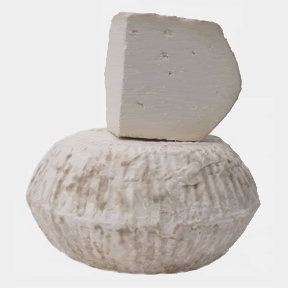
photos courtesy of www.mcgaillard.org and www.igourmet.com
¡Viva Zamorano!
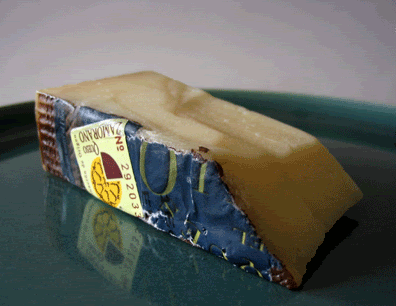
Zamorano
Region: Zamoran Province (northwest of Madrid), Spain
Milk: ewe's milk
A couple of weeks ago, my friends, Dan and Tony came over for dinner. Spain had been a recent destination for all of us, and so the meal became the perfect opportunity to revisit our memories and use one of our newest cookbooks, "My Kitchen in Spain", by Janet Mendel. This was our menu: Tempranillo, Zamorano, Spanish Olives and Marcona Almonds, Bacalao en Amarillo (Cod in Saffron Sauce), Pisto (Summer Vegetable Stew), Black Mission Fig Goat Milk Ice Cream.
Zamorano was a brand new discovery and of course, you know....I was a sucker for the packaging. Turns out, it tastes a lot like Manchego but slightly more buttery, sharp and flavorful....Delicious and enjoyed by all!
A Life Well Lived (Bucheron)
Bucheron
Region: France
Milk: goat milk
Like many things, I was drawn to this product for its incredible beauty. (Many of you know that I am a self-described package whore, consistently willing to buy most anything if the exterior is well-designed.) My perception has always been that cheese is incredibly deceptive in this category, but I recently read in "The Cheese Primer" that it is entirely possible to figure out the character of the cheese according to its cover. I am quite sure this comment was specifically about the cheese itself, and not the paper, foil or waxed packaging...so, falling in love with the look of Bucheron, only to find that its interior was just as gratifying as the exterior made this bit of knowledge all the more exciting. What's more is that while many goat cheeses fall flat and leave no mystery, Bucheron satisfies the senses. Pure white, it has a delicate and refined quality. Creamy at the edges and dry towards the center, it crumbles to the touch. Its flavor... fresh, tangy and cool, melts on the tongue. It is amazingly satisfying on its own, but I prefer it on a warm summer night, glass of white in hand and shared with an assortment of friends.
Region: France
Milk: goat milk
Like many things, I was drawn to this product for its incredible beauty. (Many of you know that I am a self-described package whore, consistently willing to buy most anything if the exterior is well-designed.) My perception has always been that cheese is incredibly deceptive in this category, but I recently read in "The Cheese Primer" that it is entirely possible to figure out the character of the cheese according to its cover. I am quite sure this comment was specifically about the cheese itself, and not the paper, foil or waxed packaging...so, falling in love with the look of Bucheron, only to find that its interior was just as gratifying as the exterior made this bit of knowledge all the more exciting. What's more is that while many goat cheeses fall flat and leave no mystery, Bucheron satisfies the senses. Pure white, it has a delicate and refined quality. Creamy at the edges and dry towards the center, it crumbles to the touch. Its flavor... fresh, tangy and cool, melts on the tongue. It is amazingly satisfying on its own, but I prefer it on a warm summer night, glass of white in hand and shared with an assortment of friends.
One Life to Live (Reggianito Argentina)
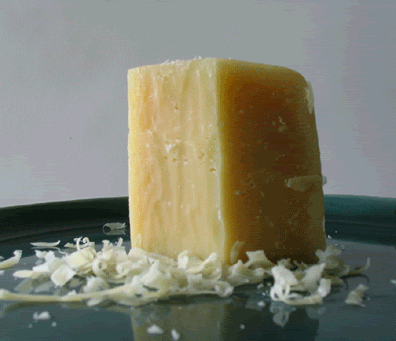
Reggianito Argentina Region: Argentina
Milk: cow milk
With a nod to the lineage of winemaking, Reggianito Argentina was first crafted by Italian immigrants who fled their homeland for the pastures of Argentina. This version of the cheese is slightly saltier and a bit more bold than the original. Even so, it makes for a wonderful cheese to keep on hand at all times. On pasta?..of course! Also delicious... asparagus with some fresh lemon juice...Reggianito Argentina grated on top.
